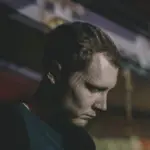André the Giant's grew so large due to a hormonal disorder called acromegaly, but the condition that helped make him so famous also led to his death in 1993.
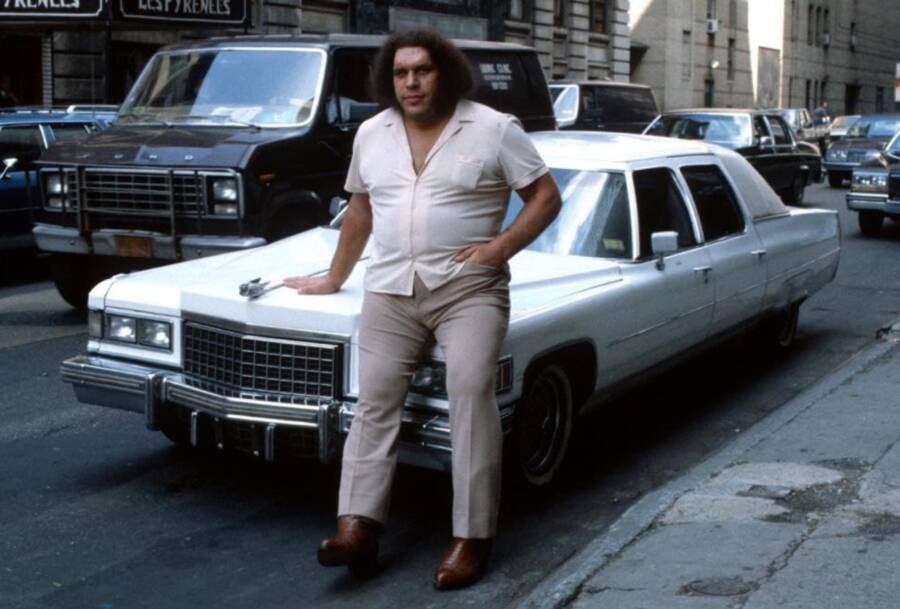
HBOAt his peak, André the Giant reportedly stood seven-foot-four and weighed 520 pounds.
André the Giant’s name certainly fit him. Standing at over seven feet tall and weighing more than 500 pounds, he was often billed as the “Eighth Wonder of the World” — and his size propelled him to great heights.
In the 1970s and ’80s, André René Roussimoff dominated the global wrestling scene. However, it was his charismatic personality that made him an international superstar. Eventually, he used this popularity to make the transition into acting, famously starring as Fezzik in The Princess Bride. Unfortunately, the condition that caused his massive stature was also responsible for his short lifespan.
André the Giant’s size was attributed to acromegaly, a hormonal disorder in which the pituitary gland produces excess growth hormone. This tragically caused numerous health issues for André throughout his life, many of which he coped with by drinking.
In the end, André the Giant lived to be just 46 years old, dying from congestive heart failure in a Paris hotel room on Jan. 28, 1993. Still, despite his time on Earth being cut short, the legacy he left behind was just as big as he had been in life.
André René Roussimoff’s Early Life And The Onset Of Gigantism
André René Roussimoff was born on May 19, 1946, in Coulommiers, France. He grew up alongside four siblings in the small farming community of Molien, some 40 miles east of Paris. Unlike his average-sized family members, however, André began exhibiting signs of gigantism early in life.
By the age of 12, he stood at six feet, three inches tall and weighed approximately 200 pounds. His extraordinary size enabled him to perform tasks on the family farm that would typically require multiple people, but it also caused problems. For example, he couldn’t fit into the seats of a school bus.
This particular trouble didn’t plague him for too long. While he often walked to school, he would occasionally receive a lift in the back of his neighbor’s truck — a neighbor who just so happened to be the famous playwright Samuel Beckett. André also left school at 14, the legal age in France at the time.
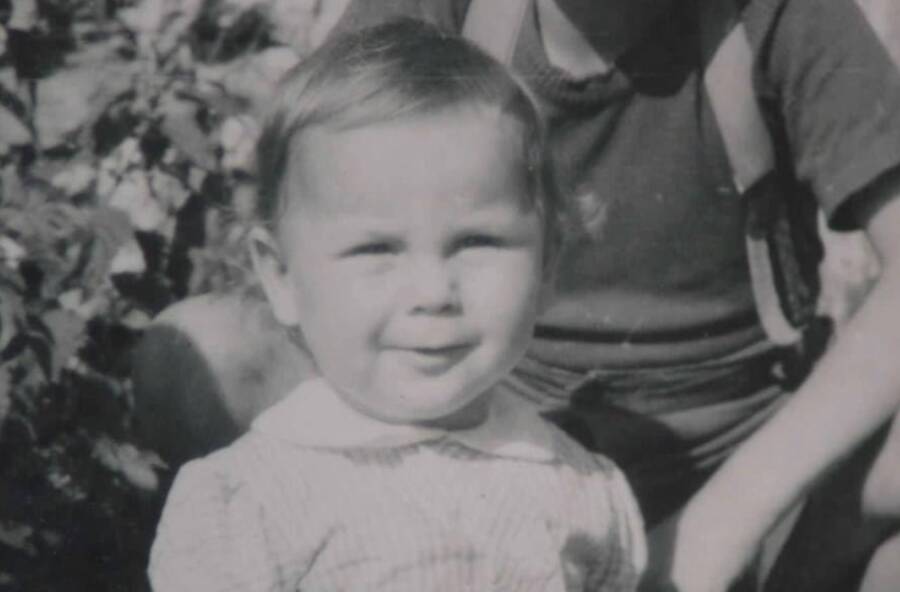
HBOAndré as a child, before his gigantism was evident.
His family recognized the difficulties he faced due to his size and supported him in whatever way they could. His mother, for instance, commissioned custom-made clothing and furniture to make sure he would be able to relax comfortably at home. As he once told CBC, “They don’t make anything for a giant.”
Despite his massive size, André led a relatively normal childhood. However, he eventually grew tired of the rural life and wanted to seek new opportunities elsewhere. So, at 17, he set out for Paris.
André The Giant’s Journey Into Professional Wrestling
When he first arrived in Paris, André quickly found work that would make use of his impressive frame. During the day, he was employed as a furniture mover, but in the evening, he spent his time training in wrestling. Naturally, when local promoters heard about him, they were eager to get him in the ring.
He soon made a name for himself in the European circuit, wrestling under names like “Jean Ferré” and “Géant Ferré,” as well as in the Japanese circuit, where he was called “Monster Roussimoff.” Then, his big break came when he caught the attention of French-Canadian wrestler Édouard Carpentier, who brought him to North America in 1971.
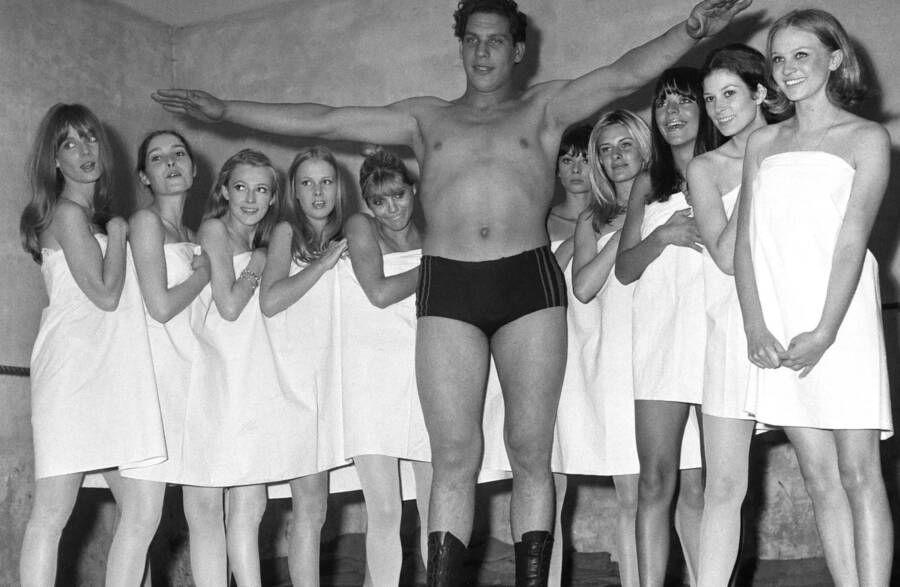
HBOAndré René Roussimoff made his wrestling debut in France on Jan. 25, 1966.
In Canada, André wrestled for Grand Prix Promotions, still being billed as Jean Ferré. It was also around this time, inspired by the film King Kong, that André acquired the moniker “The Eighth Wonder of the World,” which followed him throughout his career.
Two years after he arrived in North America, André’s growing popularity reached the ears of Vincent McMahon, the promoter for what was then known as the World Wide Wrestling Federation (WWWF). McMahon signed André in 1973, rebranding him as “André the Giant,” and began working to market his new talent. André the Giant made his WWWF debut on March 24, 1973, against Frank Valois and Bull Pometti.
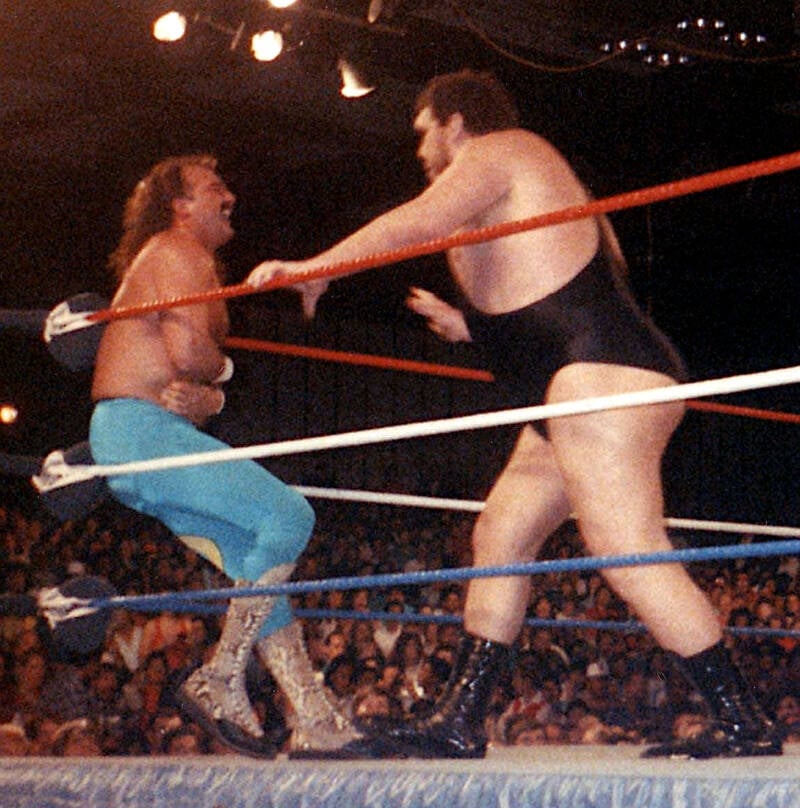
John McKeon/Wikimedia CommonsAndré the Giant in the ring with Jake “the Snake” Roberts.
Two days later, he claimed victory in a match against Buddy Wolfe at Madison Square Garden. Very quickly, it was obvious that André was going to be a fan favorite, and his rise to a global sensation over the next decade solidified this. He wrestled across the United States, Japan, Mexico, South Africa, Australia, and New Zealand, drawing massive crowds eager to witness the Giant in action.
Of course, a wrestler is nothing without a rival, and for André the Giant, that rival came in the form of Hulk Hogan.
Feud With Hulk Hogan And WrestleMania III
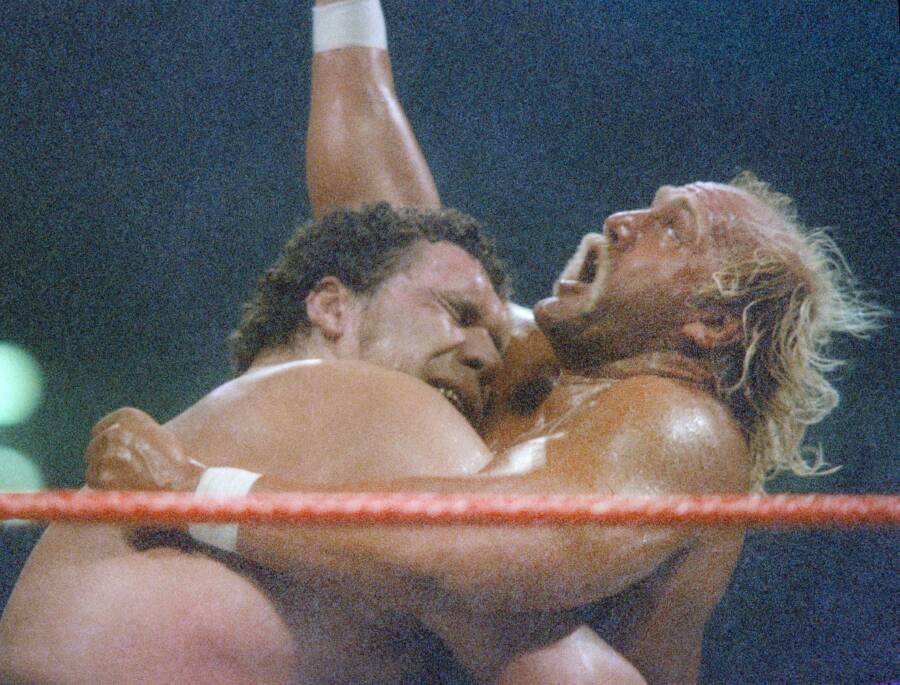
MediaPunch Inc/Alamy Stock PhotoAndré the Giant’s most iconic feud was with Hulk Hogan.
The rivalry between André the Giant and Hulk Hogan is, to this day, one of the most famous feuds in the history of wrestling, spanning several years and culminating in monumental matches.
It began in the early 1980s, after André had already established himself as a beloved figure. Hogan, on the other hand, was a fresh face in the industry. Playing off this dynamic, their early matches often saw Hogan portrayed as the villain — and he even once managed to body slam André. The feat, although impressive, didn’t lead to a victory for Hogan, however.
What it did establish was a mutual respect between the two. Still, at the time, few people realized just how intense their rivalry would become.
Onscreen tension between the men came to a head around 1987, after Hogan had become a superstar in his own right. That year, André was given an award on an episode of the interview show Piper’s Pit, but when Hogan came out to congratulate him, he became the focus of the interview. Annoyed, André abruptly left the stage.
Shortly after, during another show segment, notorious manager Bobby “The Brain” Heenan confronted Hogan on camera, accusing him of being self-centered and only befriending André to avoid facing him in the ring. Shockingly, this prompted André the Giant to challenge Hogan to a championship match at WrestleMania III. It was seen as a betrayal in the wrestling world, and André then solidified the rivalry by tearing Hogan’s shirt and necklace.
Their roles had reversed. André was now Hogan’s villain.
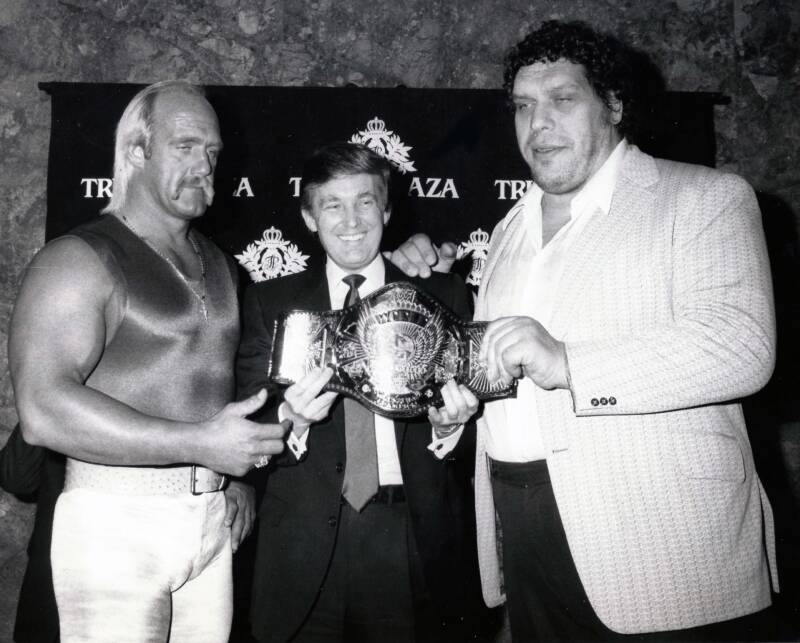
MediaPunch Inc / Alamy Stock PhotoHulk Hogan, Donald Trump, and André the Giant in 1987.
So, on March 29, 1987, the crowd at the Pontiac Silverdome in Michigan waited in eager anticipation for the match between André the Giant and Hogan to begin.
“I’d never beaten the Giant before, and there was no shame in getting beat by him because no one had ever beaten him,” Hogan recalled in an interview on the Full Send Podcast. “I asked Vince [McMahon]. I said, ‘You know, here we are the night before, what are we doing tomorrow?’ Vince goes, ‘I don’t know… I’m sure André will do the right thing.'”
To say the match was a spectacle would be an understatement, but the moment that solidified its place in history was when Hogan delivered “the body slam heard around the world.”
Hogan had downed André the Giant, then delivered his signature leg drop, still expecting André to kick out or somehow take the match back. But he didn’t. He went down, and Hogan was declared the winner.
“I realized what he had done for me,” Hogan said. “He had just made my career there, brother. I was on a roll anyway, but that was like hitting double nitrous buttons for me.”
Although it wasn’t the last time the two would face off in the ring, it was a career-defining match for both men. More importantly, outside of the wrestling world, it showed that André René Roussimoff was the humble sort of man who could put his own ego aside for the sake of the show — and for the sake of a fellow wrestler.
André had passed the proverbial torch in wrestling, but, of course, his spandex-laden matches in the ring were not all he was known for. If André the Giant could lay claim to two other things in life, they were acting and drinking.
André The Giant’s Remarkable Acting Career
Though he is best known for his role as Fezzik in The Princess Bride in 1987, André made several other notable appearances in film and television during his lifetime.
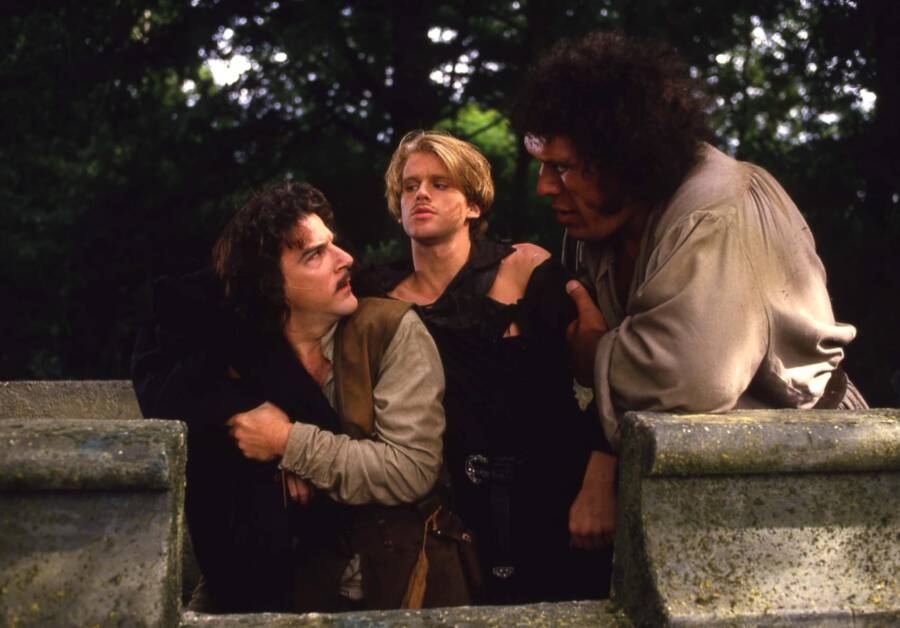
MGMMandy Patinkin, Cary Elwes, and André Roussimoff in The Princess Bride.
His acting debut actually came a full decade earlier, in 1976, when he portrayed a Sasquatch (also known as Bigfoot) in a two-part episode of the popular series The Six Million Dollar Man. Then, in 1981, André appeared in the series B.J. and the Bear, and the following year, he guest-starred in The Greatest American Hero.
In 1984, he appeared in two films. The first was an uncredited role as Dagoth in Conan the Destroyer, a resurrected horned giant god killed by the titular Conan. He also appeared in Micki & Maude, making a cameo as himself.
Then came The Princess Bride, the film that reportedly meant the most to André. He spoke often of his role in the movie and often invited people over to his house to watch it so that he could ask them if they liked his performance. On set, he left just as big an impression as he did on film.
In his nonfiction work Which Lie Did I Tell?, William Goldman, author of the novel and the screenplay of The Princess Bride, wrote that André was one of the gentlest and kindest people he had ever met. That sentiment was echoed by Cary Elwes, who played Westley in the film.
Elwes also later offered some unique insight into André’s legacy as “the greatest drunk on Earth.”
André The Giant, The Greatest Drunk On Earth
Outside of his professional achievements, André Roussimoff was a notoriously heavy drinker — though, given his size, it may have just been a matter of proportions.
There are countless stories of André’s frankly astonishing consumption of alcohol. Hulk Hogan once said that he witnessed André drink 108 12-ounce beers over the course of about 45 minutes. Fellow wrestling legend Ric Flair also said, “He drank every bottle of vodka on the plane” during a flight to Tokyo.
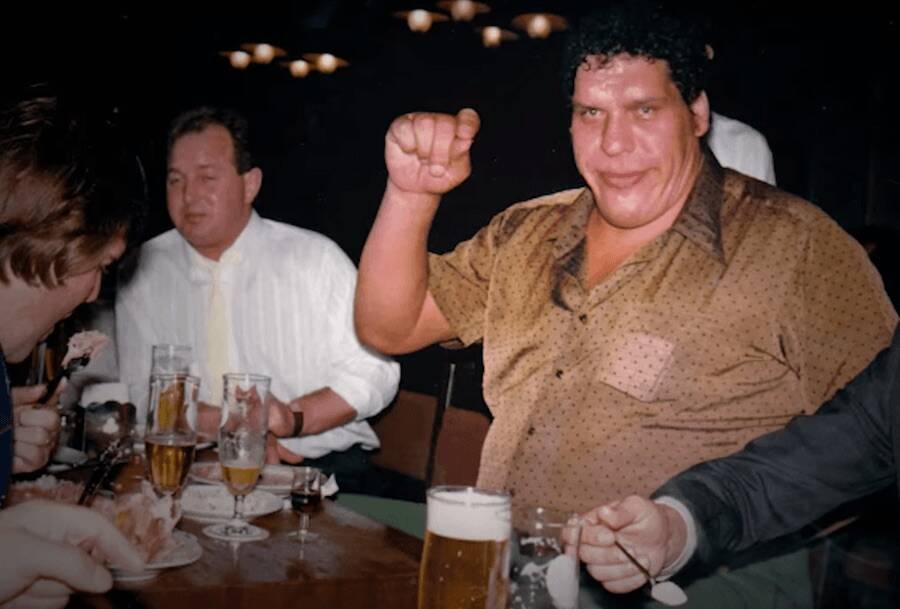
HBOAndré the Giant allegedly once racked up a $40,000 bar tab.
Despite drinking often and to great excess, André rarely appeared intoxicated. On the few occasions he did, though, things often took a chaotic turn.
According to Elwes, André once got so drunk that he fell on a man waiting for a cab in New York City, seriously injuring him by accident. He also enjoyed taking his fellow cast members out drinking with him, and in trying to keep up with him, they wound up with hangovers for a good portion of filming. But André reportedly didn’t drink simply because he liked it.
“André didn’t drink for the sake of drinking — André was in a lot of pain, God bless him,” Elwes once said in an interview with Vanity Fair. “His back was injured from carrying all that weight around, and from having other wrestlers breaking chairs over his back.”
The chronic pain also likely stemmed from André’s acromegaly, which led to metabolic complications and diabetes. Unfortunately, during his lifetime, treatment options for acromegaly were limited, and he did not undergo surgery to remove the pituitary tumor responsible for his condition. All of this also likely contributed to André’s sudden and tragic death in January 1993.
How Did André The Giant Die?
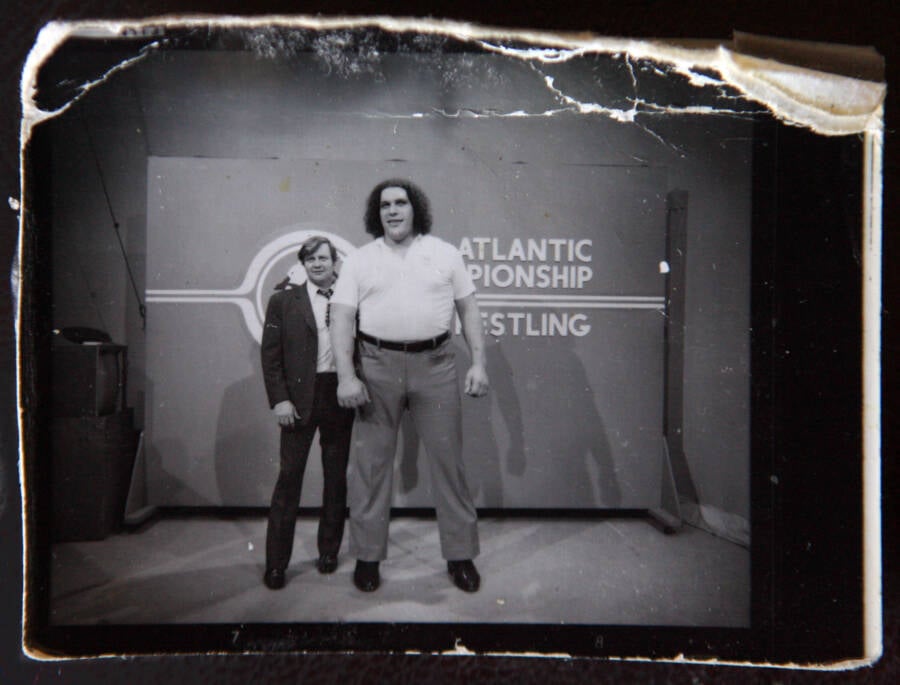
ZUMA Press Inc/Alamy Stock PhotoA photograph of George Scott, a wrestler and promoter, with André the Giant that Scott kept in his wallet.
In January 1993, André traveled to Paris to attend his father’s funeral. Following the services, he chose to stay in the city to spend more time with his family.
Then, on Jan. 28, André was found deceased in his hotel room. The cause of death was congestive heart failure, a condition often associated with untreated acromegaly.
In his will, André wrote that he wanted to be cremated. However, due to his size, there were no facilities in France that could actually manage the task. Instead, his body was transported back to the United States for cremation. His ashes were then scattered at his ranch in Ellerbe, North Carolina, a place he cherished and considered a personal retreat.
He also left the majority of his estate, including rights to his image and likeness, to his daughter, Robin Christensen-Roussimoff, who was born in 1979.
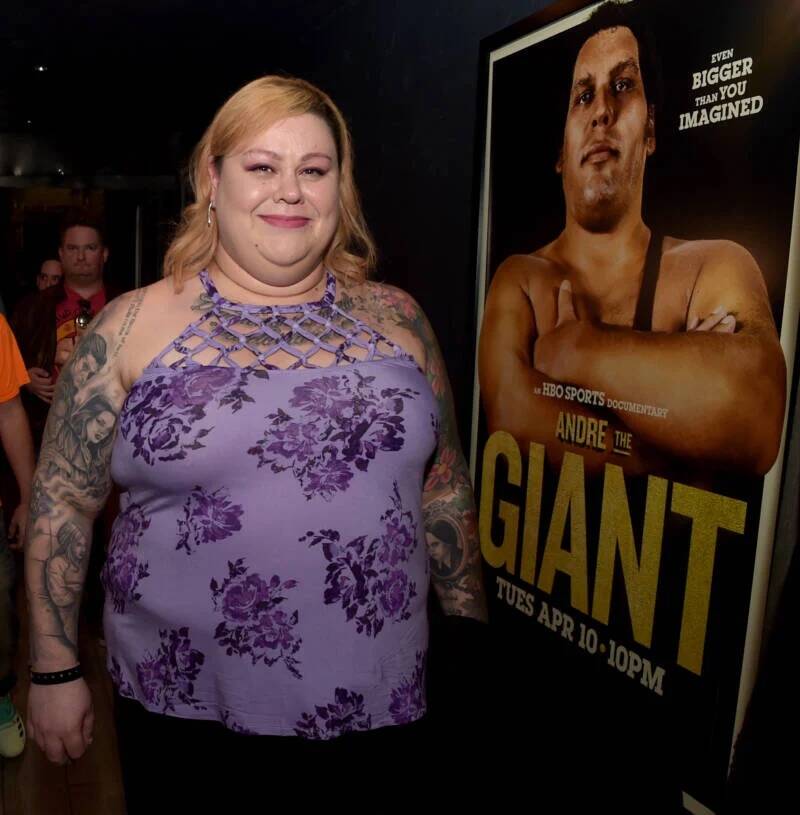
Kevin Winter/Getty ImagesRobin Christensen-Roussimoff, daughter of André the Giant and Jean Christensen, a public relations employee at the WWF.
André and his daughter had a somewhat distant relationship. His busy schedule — and the fact that he and Robin’s mother, Jean Christensen, never married or developed a strong romantic relationship — meant that he only saw Robin a handful of times, usually at wrestling events or in court.
That said, Robin noted that she never felt “excluded” from her father’s life, nor did she have trouble reaching him when she needed to. Still, she never got to know her father in the way she wanted to — in large part due to his sudden death.
“Maybe had he lived longer, I might have had a closer relationship with him,” she once said in an interview. “Perhaps he would’ve attended my graduation, or been proud of my successes. I’ll never get to really know who he was as a person.”
Despite this, Christensen-Roussimoff has embraced her role as the guardian of her father’s legacy, difficult as it may be at times. As for André’s legacy itself, it’s clear from those who knew him, however briefly, that he left the world just a bit better than he found it.
“I’m very happy traveling all over the world,” he once said. “I’m very happy to see all those people, all different people. And all different countries. And… wrestling promoters, and lots of fans around to see me, and that’s why I’m proud. I just want to make everybody happy.”
After reading about André the Giant’s fascinating life, go inside the shocking death of Owen Hart, the wrestler who fell 78 feet during a live event. Then, learn about Angus MacAskill, the nearly eight-foot-tall giant who came before André.


